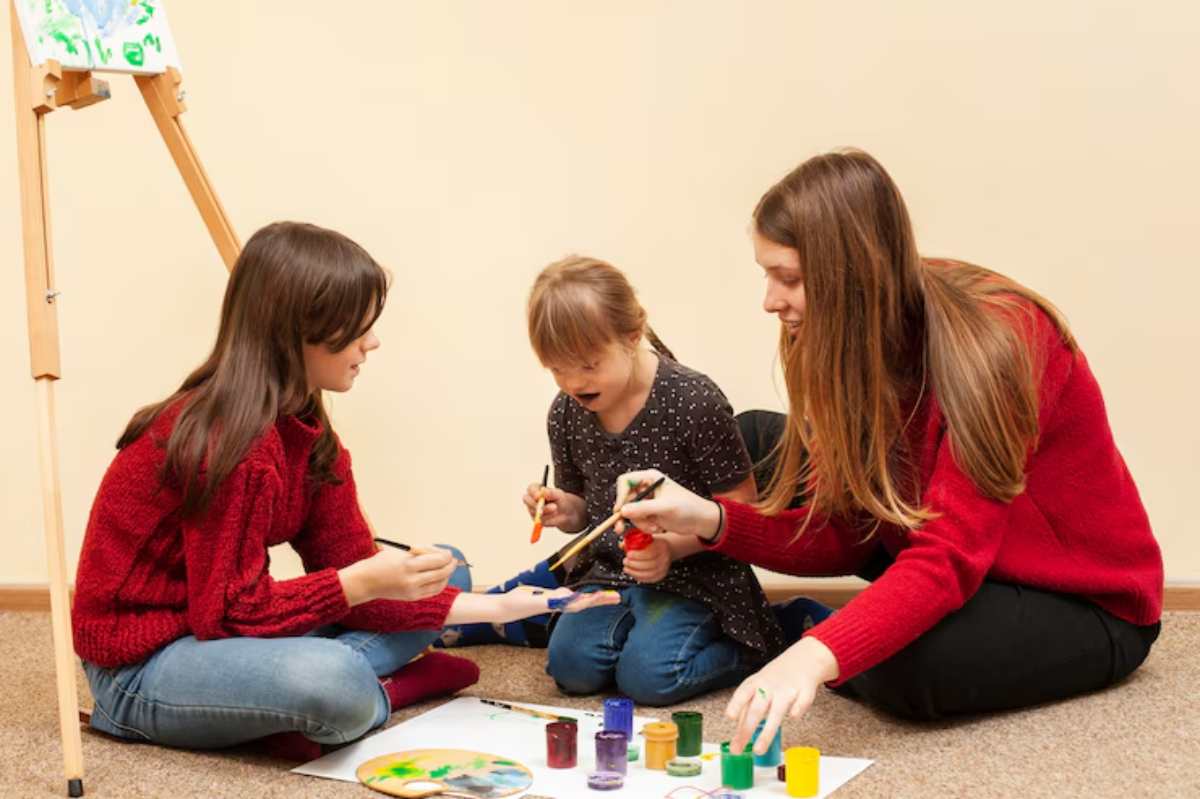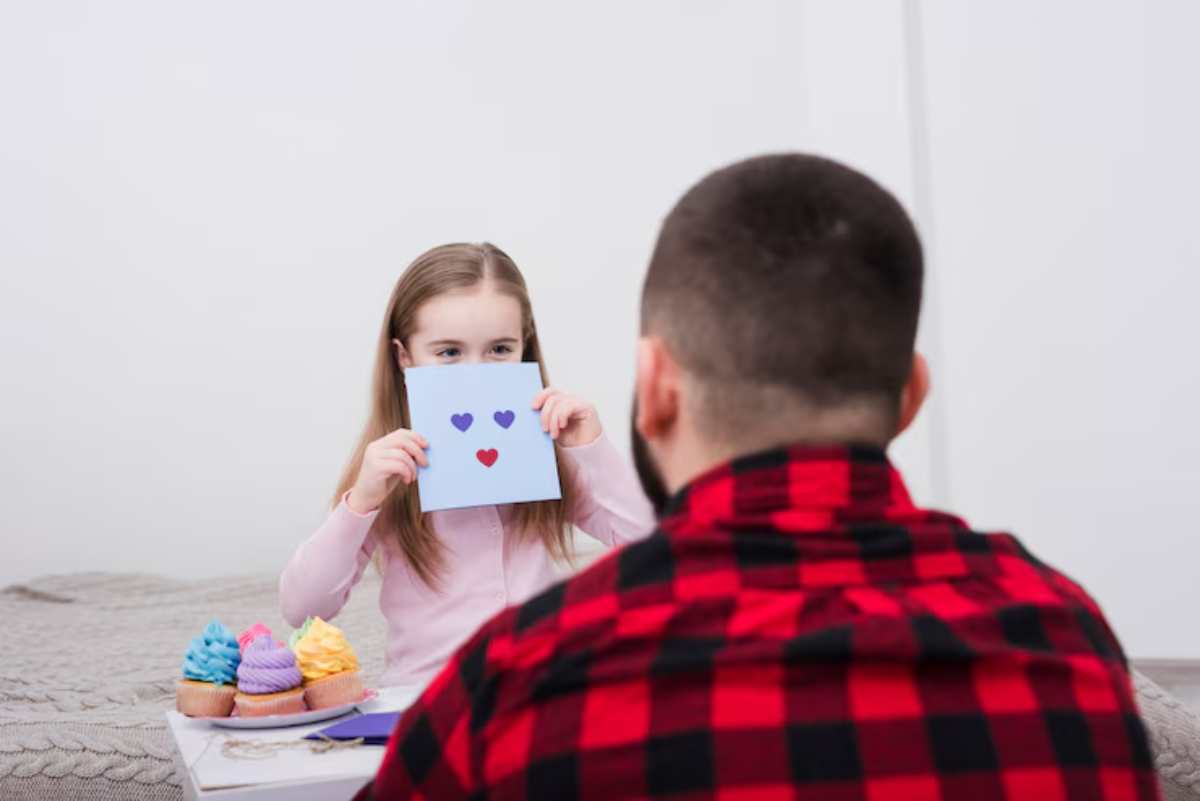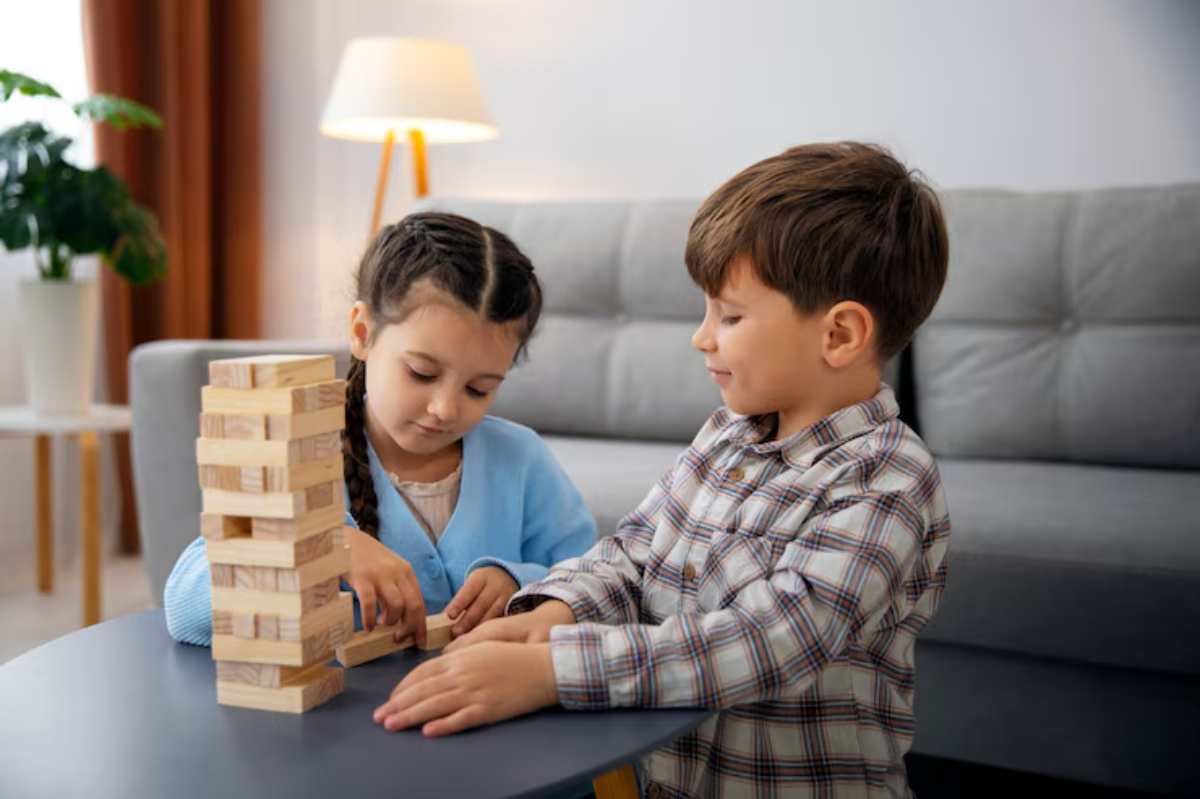
Activities to Strengthen the Sibling Bond
Sibling relationships are often the longest we experience in life. Building strong sibling bonds doesn’t happen by itself. It takes time, effort, and some creativity. In today’s fast-paced world, siblings may feel more disconnected. School, activities, and screen time take up so much time.
Intentional bonding activities can help siblings connect. These can be planned or happen naturally. They lead to better understanding, easier cooperation, and stronger affection and trust. If you’re a parent aiming to reduce rivalry or create happy memories, this blog shares fun ways to bring siblings together.
Why It Matters
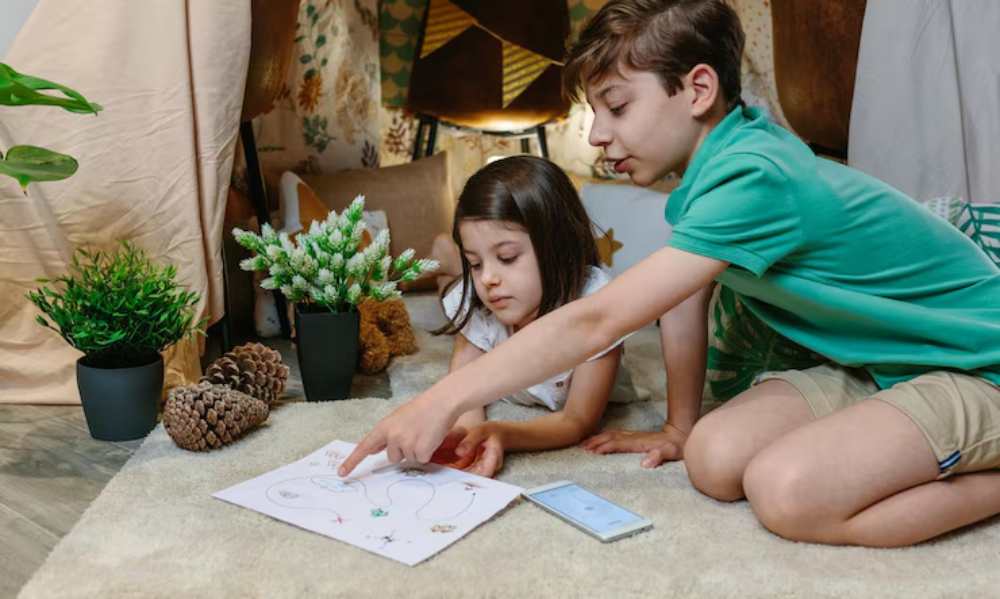
The Foundation of a Lifelong Relationship
While friendships may come and go, sibling relationships often remain a constant presence in a person’s life. Building a strong sibling bond in childhood helps create support, connection, and harmony that can last into adulthood.
Less Conflict, More Connection
Structured sibling bonding time helps redirect energy from arguments to collaboration. It lets kids create shared experiences, learn to solve problems, and be less competitive.
Mental and Emotional Well-being
Kids with strong sibling bonds often feel more empathy. They also solve conflicts better and feel more like they belong in the family. These benefits can significantly support emotional regulation and self-esteem.
Key Benefits of Sibling Bonding Activities
1. Improved Communication Skills
Teamwork activities, like building a fort or solving a puzzle, help siblings. They practice listening, compromising, and sharing ideas in a positive way.
2. Strengthened Teamwork
Working toward a shared goal teaches siblings the value of collaboration and mutual support. This reinforces trust and the habit of helping one another.
3. Memory-Making Opportunities
Having fun together builds happy memories. These memories can help ease future conflicts and remind everyone of their bond.
4. Greater Emotional Intelligence
Doing things together, like working or being creative, helps siblings understand each other more. They learn about feelings, needs, and how to communicate, which boosts emotional growth.
Additional Expert Tips & Common Mistakes to Avoid
Tips for Encouraging Strong Sibling Bonds
Rotate Responsibility
Assign siblings shared tasks—like setting the dinner table or organising a toy shelf—but alternate leadership roles. This prevents power struggles and teaches respect for each other’s ideas.
Build Routine Bonding Time
Schedule a weekly “Sibling Hour” where your children can play board games, cook something simple together, or even plan a scavenger hunt. The consistency makes bonding feel safe and expected.
Mix Play with Purpose
Try activities that encourage teamwork, like team sports, cooking, or crafts. This way, siblings can bond and solve problems together.
Celebrate Their Wins as a Team
When siblings achieve something together, like finishing a puzzle, celebrate their teamwork. This boosts their sense of shared success.
Common Pitfalls to Avoid
- Forcing Connection Too Rigidly: Allow space for natural dynamics. Don’t demand closeness—facilitate it gently and let kids take the lead when they’re ready.
- Comparing Personalities or Skills: Comments like “Why can’t you be more outgoing like your sister?” can fuel tension. Honour their differences instead.
- Letting Screens Control Interactions: Screen time can be fun, especially in co-op games. But passive watching often doesn’t help build relationships. Balance is key.
- Only Focusing on Conflict: Don’t just intervene when things go wrong—also highlight and praise moments of sibling cooperation.
Advanced Insights and Expert Recommendations
Age-Appropriate Bonding Activities
For Toddlers and Preschoolers
- Interactive Storytime: Let older siblings “read” to younger ones. Even if they can’t read yet, storytelling promotes connection.
- Simple Crafts: Activities like finger painting or sticker collages give young siblings a space to create side by side.
For Elementary-Aged Kids
- Treasure Hunts: Let siblings team up to find clues and solve challenges together.
- DIY Science Experiments: Projects like making slime or volcanoes are messy, fun, and memorable.
- Sibling Cook-Offs: With supervision, let them create snack recipes and serve the family. Collaboration meets creativity.
For Teens and Tweens
- Collaborative Projects: Give them a room makeover to plan or a shared playlist to create.
- Outdoor Challenges: Activities like hiking, biking, or team sports build trust and let siblings support one another physically and emotionally.
- Media Collaboration: Have them make a family photo collage or short video together. It’s a modern twist on memory-making.
When to Step In—and When to Step Back
Parents should see the difference between helpful support and being too involved. Help younger kids when needed, but let older siblings work out their conflicts. This way, they can own their time together.
Let them take turns deciding on activities. This fosters fairness and ensures everyone feels involved.
Examples of Sibling Bonding Activities That Work
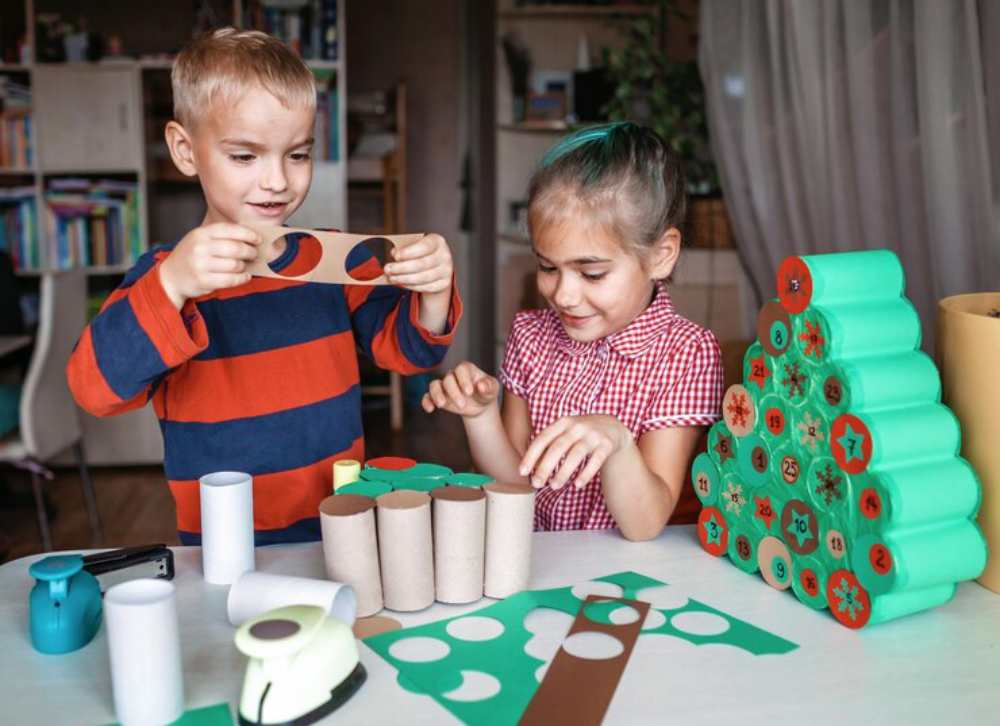
Creative Challenges
- Build the tallest tower from household objects
- Make a joint comic strip or storybook
- Host a backyard “sibling Olympics” with goofy challenges
Everyday Moments with Intent
- Grocery shopping together with a shared list
- Prepping lunchboxes side-by-side
- Organising their rooms or closet space as a team
Family Game Night Ideas
- Co-op Board Games: Games like Forbidden Island or Outfoxed! Require players to work together.
- Charades or Pictionary: These games promote laughs and low-pressure cooperation.
- Role-Swap Skits: Have siblings act like each other in silly role plays—it helps build empathy in fun ways.
Building Bonds That Last
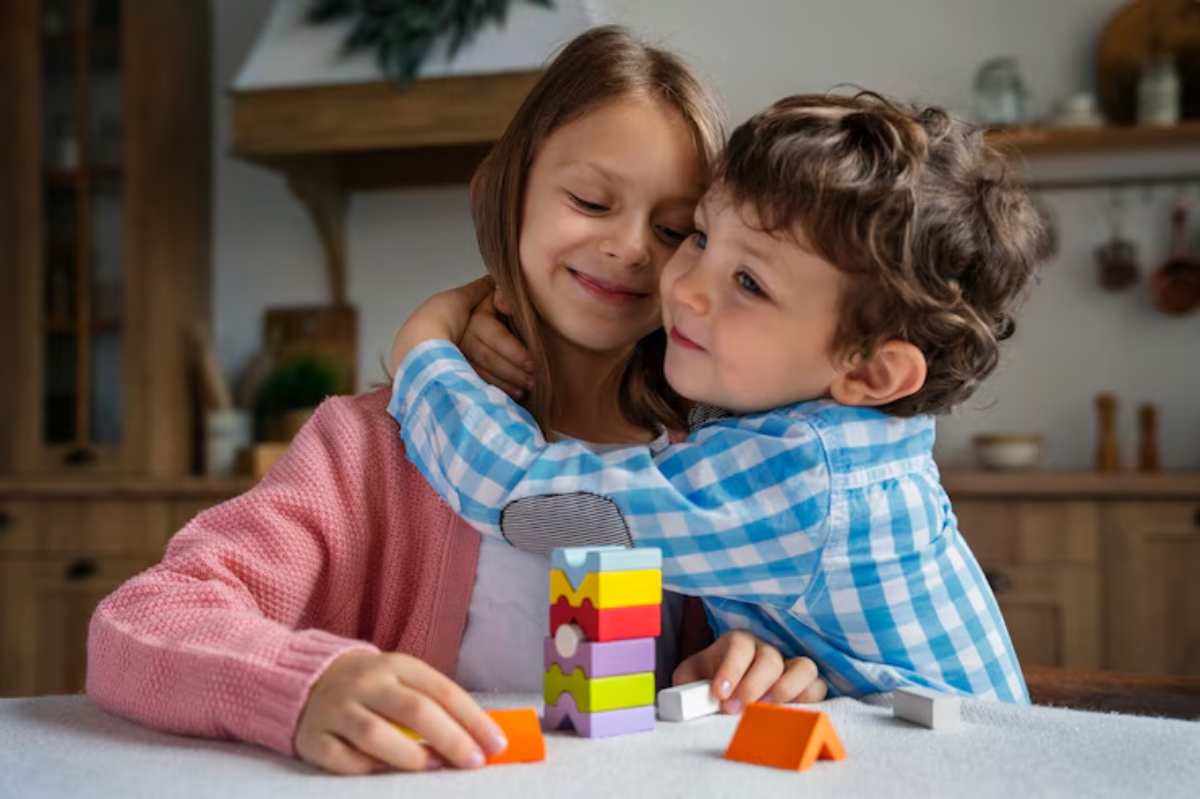
Sibling relationships aren’t always smooth, but they can become some of the most supportive and enduring connections in a child’s life. Parents can help siblings bond by giving them space to play, work together, and grow. This sets the stage for a strong relationship in the future.
Bonding doesn’t require big outings or complex plans. Often, it’s the simple, consistent moments—making a snack together, teaming up for a game, or tackling a shared task—that have the most impact.
Encourage these experiences. They will cut down sibling tension. Plus, they’ll create trust, friendship, and lasting bonds.

